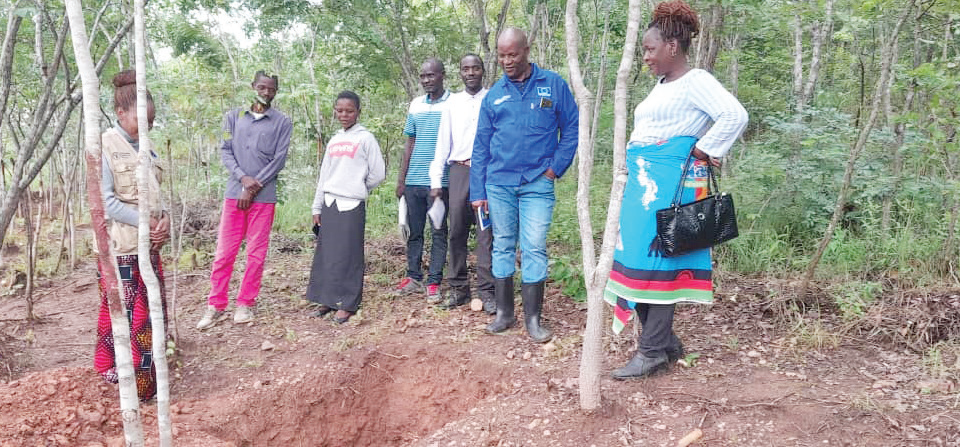Vital wetlands in danger
Today is World Wetland Day, but every drying marsh and swamp points to familiar hazards and disasters. JAMES CHAVULA writes.
Ibrahim Kuchanga had just returned from his maize field in the Lake Chilwa basin when we met in Duwa Village near Mposa in Machinga.

The 59-year-old, who fell blind almost 16 years ago, is one of nearly one million Malawians who rely on the fertile wetlands around the salty lake for subsistence.
“For us, Lake Chilwa is almost everything,” he says. “It is the main source of grain, fish and moisture.”
Come rain or sunshine, the man and his wife Hawa take a 20-minute walk to their field.
But the parents of eight are worried about declining crop yields. In the traditional food basket, thousands of households chronically struggle to feed themselves.
Droughts have become frequent and the marshes near the lake are receding.
“When I lost my sight in 2001, crop yields were already dwindling. The rains usually start late and stop early, with lengthy dry spells hitting just when maize is tasselling,” Kuchanga explains.
The worst crisis for the pastoral population was when the lake disappeared during exceptionally dry weather in 1968.
Kuchanga was only 10 when the catastrophe disrupted lives of the fisherfolk, rice farmers and maize growers in Machinga, Zomba and Phalombe districts.
Sparse rains and extreme temperatures also depleted almost 60 percent of the lake five years ago.
The drying of the lake always brings to the front its centrality in the sprawling communities around it.
“The importance of a well is known when it is dry,” says Mariam Barnet. “When the lake dried, we had to walk long distances to find fish and the rice, maize and bananas from these shores drop drastically.”
The Lake Chilwa basin is one of the wetlands prone to shocks of climate change.
Just last year, 80 percent of the neighbouring Lake Chiuta in Machinga as well as Ndindi and Elephant marshes in Nsanje, which supports the livelihoods of almost 500 000 farmers, dried up due to drought.
Equally affected was Lake Kazuni which nourishes wildlife in Vwaza Marsh Game Reserve west of Rumphi Town
However, the greatest of the country’s wetlands is the Lake Chilwa basin.
Studies by Leadership for Environment and Development (Lead) show the vast floodplain supports livelihoods of over one million people with natural resources goods and services valued at almost $21 million a year.
Fish contributes about $18.7 million, according to Lead executive director Professor Sosten Chiotha,
The environmental think-tank has partnered the World Fish and Forestry Research Institute of Malawi (Frim) in a Lake Chilwa Basin Climate Change Adaptation Programme.
The intervention seeks to empower nearly 1.5 million Malawians spread across the marshes of the enclosed saline lake to overcome weather shocks and harsh effects of climate change.
Frim director Dr Tembo Chanyenga says the wetland is bearing the brunt of massive deforestation.
“Reckless cutting down of trees has left many crops fields with massive soil erosion. The lake with no outlet and rivers are buried in sand and silt when it rains,” he explains.
This endangers the country’s second-largest fish producer.
In his remote setting, Kuchanga is a symbol of triumph over adversity having founded Tikondane Ability Club which owns two fish ponds and an irrigation farm to boost their resilience to impoverishing impact of climate change.
The group, formerly “a disability club”, comprises 30 farmers, including 19 with visual impairments.
Low catches
During the visit, they were waiting for a second catch from the ponds they dug early last year. In March, World Fish offered them nearly 1 000 fingerlings as catches from Lake Chilwa are increasingly low and unpredictable.
Equally elusive are good harvests. On a sunny day, the area looked parched, the knee-high maize by the roadside was wilting and the locals feared a repeat of last year’s drought which has left nearly 6.8 million Malawians in need of food assistance.
However, the damboland, where Tikondane members grow maize twice a year using conservation agricultural methods, was home to a healthy crop. The farmers, who used to harvest about 1 500kg of maize per hectare now yield almost five times more.
Said Kuchanga: “The frequent droughts, floods and drying of water bodies are just a wake-up call. We must conserve the lake and its swamps. We must also stop relying on rains and maize alone. We need to change the way we live.”n





